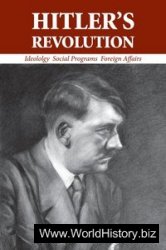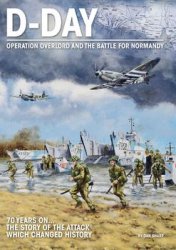Along with his letters, histories, and poetry,
Pius II wrote autobiographical commentaries
that were later combined into an extensive
memoir. Throughout his pontifi cate (1458–64),
he called for a campaign against the Ottoman
Turks, though the response from European
monarchs was tepid; he fi nally decided to lead
one himself, and died in Ancona on the Adriatic
Sea where he was assembling troops. His
memoirs include a speech laying out his plans,
in which he offers a rousing call to arms and
summarizes some of the criticism of the church
leveled by his contemporaries. Historians’ views
of Pius’s sincerity in regard to the campaign
against the Turks are mixed; some see him as
motivated primarily by sincere worries about
the future of Christendom, others by a desire
to build up papal power and prestige. These
two motivations were probably not separate in
Pius’s mind.
We [the pope is speaking of himself in the
plural] shall imitate our Lord and Master
Jesus Christ, the holy and pure shepherd who
hesitated not to lay down His life for His
sheep. We too will lay down our life for our
fl ock since in no other way can we save the
Christian religion from being trampled by the
forces of the Turk. We will equip a fl eet as
large as the resources of the Church will permit.
We will embark, old as we are and racked
with sickness. We will set our sails and voyage
to Greece and Asia …
We hear you whispering. You say, “If you
believe war to be so diffi cult, how can you
go on without securing adequate strength?”
We are coming to that point. An unavoidable
war with the Turks threatens us. Unless
we take arms and go to meet the enemy
we think all is over with religion. We shall
be among the Turks in the position in which
we see the despised race of Jews among
Christians. It is either war or infamy for
us. “But,” you say, “war cannot be waged
without money.” It occurs to us to ask where
we are to look for money … All ways have
been tried. No one has answered our prayers.
We sent envoys to the provinces. They were
scorned and derided. On every single thing
we do the people put the worst interpretation.
People say we live in luxury, amass
wealth, are slaves to ambition, ride on the
fattest mules and the most spirited horses,
wear trailing fringes on our robes and walk
the streets with puffed-out cheeks under red
hats and full hoods, breed hunting dogs, lavish
much on actors and parasites and nothing
on the defense of the Faith. And they are not
entirely wrong. There are many among the
cardinals and the other members of the Curia
who do these things …
What do you think we ought to do in such
circumstances? Must we not seek a way to
recover our lost credit? We must change to
paths long disused … Abstinence, purity, innocence,
zeal for the Faith, religious fervor,
scorn of death, have set the Church of Rome
over the whole world … By martyrs and
confessors alike our Church was made great.
It cannot be preserved unless we imitate our
predecessors … there is no longer room for
choice. We must go.
(From Leona C. Gabel, ed., and Florence A. Gragg,
trans., Memoirs of a Renaissance Pope: The
Commentaries of Pius II: An Abridgement [New York:
Capricorn Books, 1959], pp. 356–9.)
Military campaigns are one way for religions to gain or retain adherents, and individual
or group efforts at conversion are another. Christian missionaries traveled in
all directions from the Mediterranean, reaching Ethiopia by at least the third century,
southwest India and Ireland by the fi fth, Russia by the sixth, China by the eighth, and
Iceland by the tenth. Stories tell of missionaries traveling further, as well; Saint Brendan
of Clonfert (486?–577), an Irish monk, is supposed to have made it to North America
in his small skin boat, for which he gained the title “the Navigator.”
Christian communities in Asia and Africa were separated from European Christianity
by the spread of Islam, which fi rst motivated and accompanied Arab conquests
in the Middle East, North Africa, and the Iberian peninsula, and then continued to
expand in sub-Saharan Africa and South and Southeast Asia. Muslim legal scholars,
Sufi mystics, and other types of religious leaders helped to spread and solidify Muslim
teachings both within and beyond territories in which the rulers were Muslim. Effective
missionaries in both Christianity and Islam often absorbed and modifi ed indigenous
traditions and customs, so that places sacred to specifi c gods became identifi ed
with saints or apostles in Christianity and local gods became manifestations of Allah
in Islam. By 1450 there were thus wide variations in rituals, practices, institutions, and
even doctrines in both religions, some of these sanctioned by the authorities and others
not. Travelers from one part of Christendom or one part of the dar al-Islam (land
of Islam) to another frequently commented on how strange – and often unacceptable –
they found the practices of their co-religionists elsewhere.
Though merchants and missionaries were generally different men, they might very
well have traveled together. Religious and economic motives were often similarly mixed
in European contacts with the rest of the world. Italian merchants often wrote “in the
name of God and profi t” on the fi rst page of their account books. According to the
Byzantine historian Procopius, knowledge of silk-making and silkworm eggs were stolen
from China – despite the emperor’s threat of death to whoever did so – by eastern
Christian monks, who brought the eggs back to Constantinople in their long walking
staffs. The Byzantine emperors attempted to regulate and guard silk production just as
the Chinese emperors had, to prevent a private commercial monopoly from developing
and preserve Byzantium’s status as the main supplier of silk to the Mediterranean. They
were equally unsuccessful, and silk industries developed in Italian cities such as Lucca,
though whether monks were again involved in the spread of silk technology is not clear.
Such ventures for God and profi t occasionally merged into diplomacy. In 1287,
Arghun, a nephew of Kublai Khan who was the ilkhan in Persia – the ruler of the westernmost
regional Mongol Empire – sent Rabban Sauma, a Nestorian Christian priest
of Turkic origin, as an envoy to the pope and the kings of France and England, hoping
to create a coalition against the Muslims. (Nestorians were a splinter group within
Christianity that disagreed with the rest of the church about the relationship between
the divine and human natures of Jesus Christ; they split off in the fi fth century and
carried out missions in India and China.) A few years later, the pope sent John of Monte
Corvino (1247–1328), a Franciscan friar, to Khanbalik, on a similar mission. Both the
pope and the ilkhan envisioned themselves as the head of this alliance, however, and
neither mission was successful. The journal of Rabban Sauma and the letters of John of
Monte Corvino were not copied and printed to the extent that Marco Polo’s writings
were, but the events they described became well known in Europe.
In 1450, then, though most Europeans never traveled very far from their home towns
and villages, some went great distances. They took land routes into Asia, following
the roads on which silk had long traveled from China; they took sea routes to Asia,
sailing down the Red Sea to Aden; they took sea routes down the African coast to the
Mali Empire, then back by way of the Azores. The widening of geographic horizons
was not a one-way process, however, for routes that once existed could also disappear
or become more dangerous. By 1450 the Viking colony on Greenland had all died of
starvation or been killed by Inuit, and the settlements in Iceland had been devastated
by the Black Death, which reached the island in the early fi fteenth century. Voyages in
the North Atlantic were thus much fewer than they had been earlier, and memories of
Viking trips to North America were turned into myths, their reality confi rmed only
in the late twentieth century through archeological excavations in Newfoundland. The
Mongol Empire in China had broken apart, with the Ming dynasty that succeeded it
dominated by scholar-bureaucrats who became increasingly suspicious of contacts with
outsiders. Foreign merchants could stay in the carefully watched ports of Quanzhou
and Guangzhou (Canton), but not travel around. Government support of naval expeditions
and ship-building in China – which had led to seven huge naval expeditions into
the Indian Ocean and the Persian Gulf led by Admiral Zheng He in the early fi fteenth
century – ended, and the navigational knowledge they had gained was lost. Though we
recognize that 1450 marks the beginning of much greater European interaction with
the rest of the world, it is doubtful whether many people living in that year would have
noticed this trend.




 World History
World History









